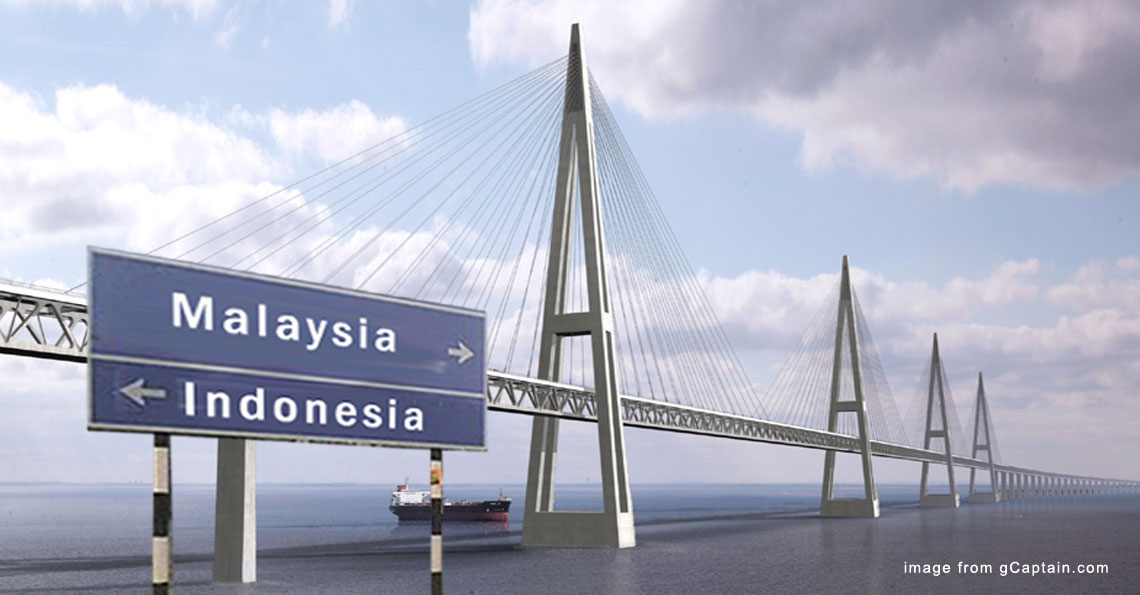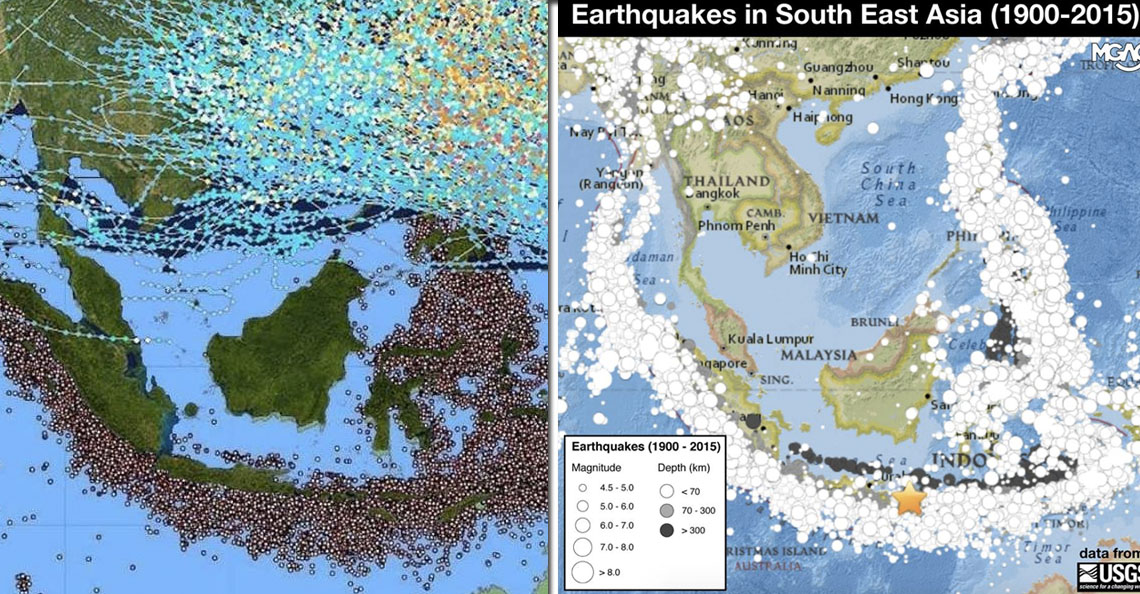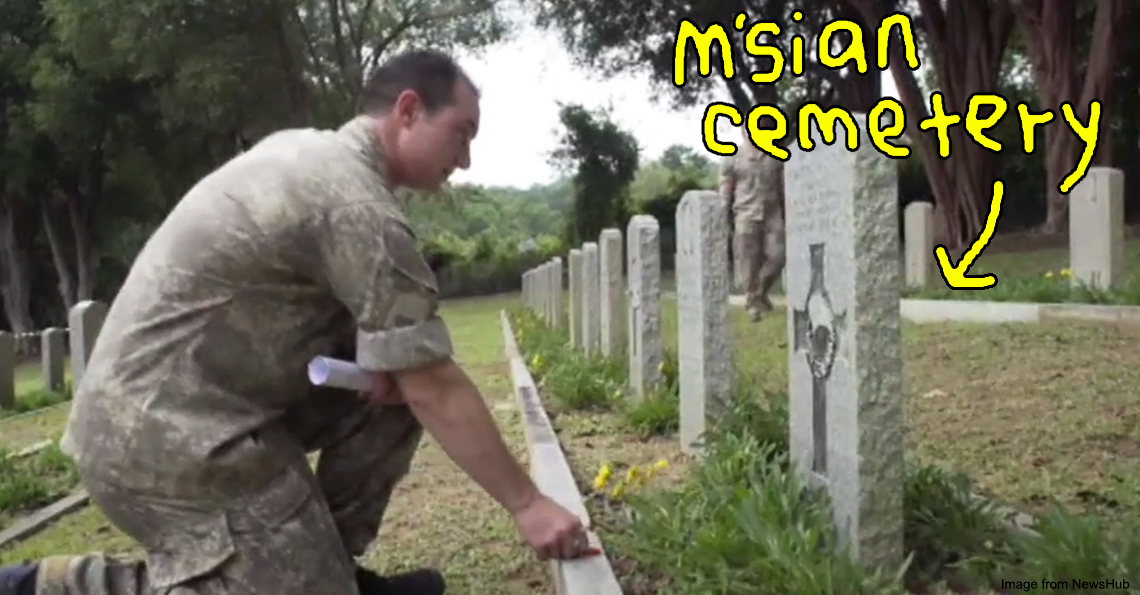Err… Could Malaysia have been partly responsible for the haze?
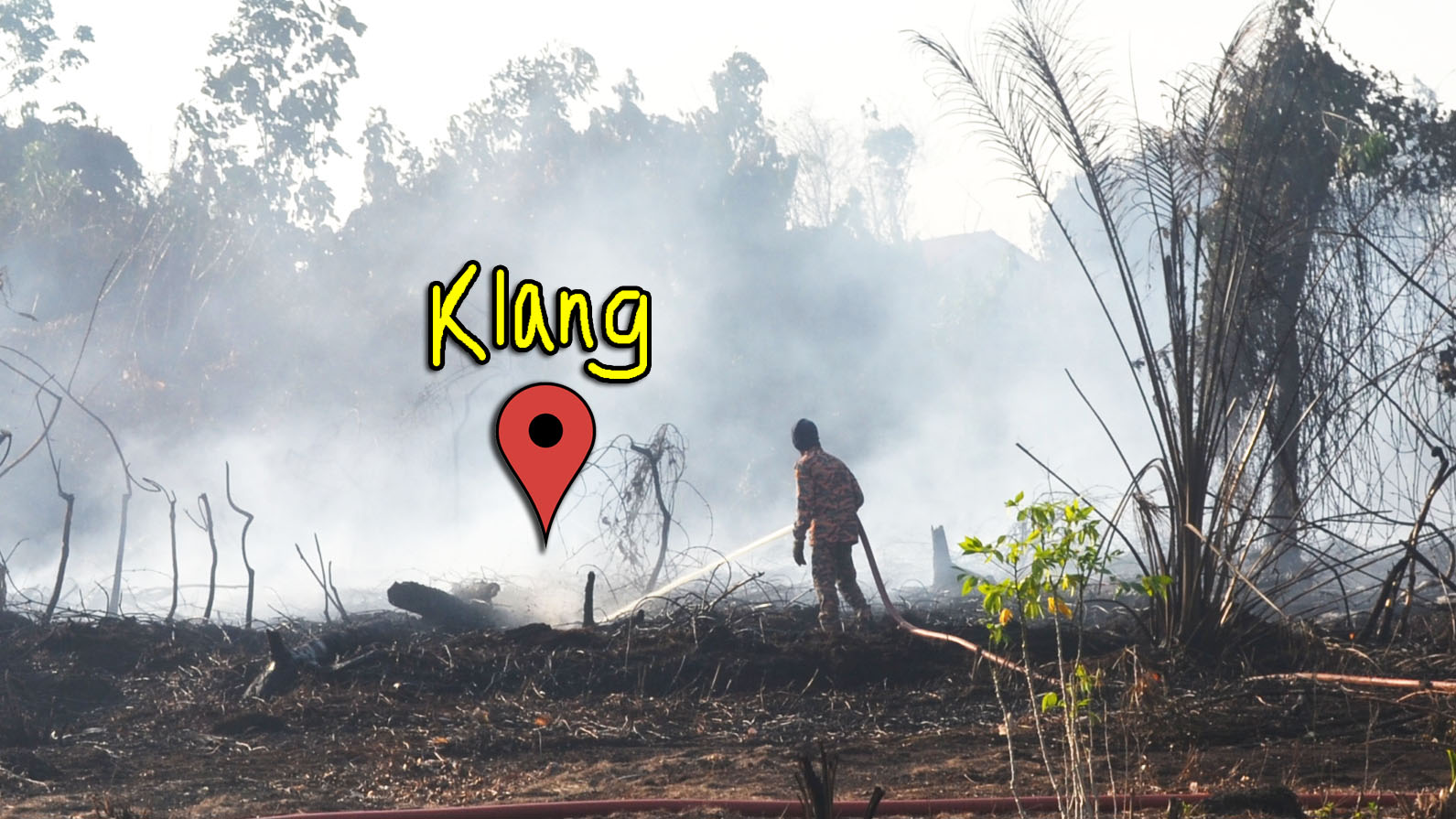
- 851Shares
- Facebook841
- Twitter1
- Email2
- WhatsApp2
We Malaysians are finally seeing a clearer view of the skyline. An annual event, it seems like we’ve grown so accustomed to this severe air pollution that some parties have begun calling it ‘weather’.
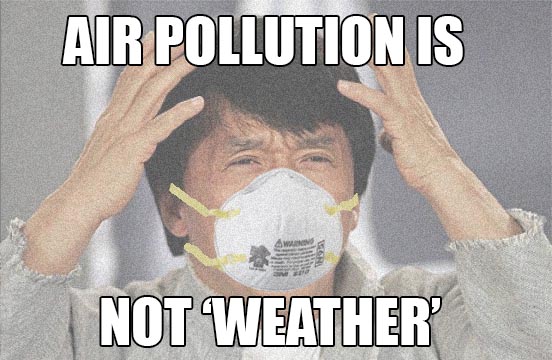
But while we taruk Indonesia for the fires, is it fair to ask – are Malaysians to blame, even for the slightly bit? Well… in June last year when the API was 102, our Editor noticed that some of the hotspots were on Malaysia’s side… in KLANG. (Hometown to Jo-Lyn who is Protector of Klang!)
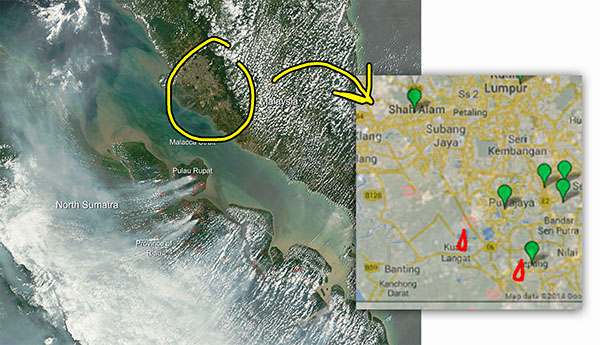
So we rombongan sambil belajar lor! And we actually found a firetruck putting out a plantation fire. OMG!
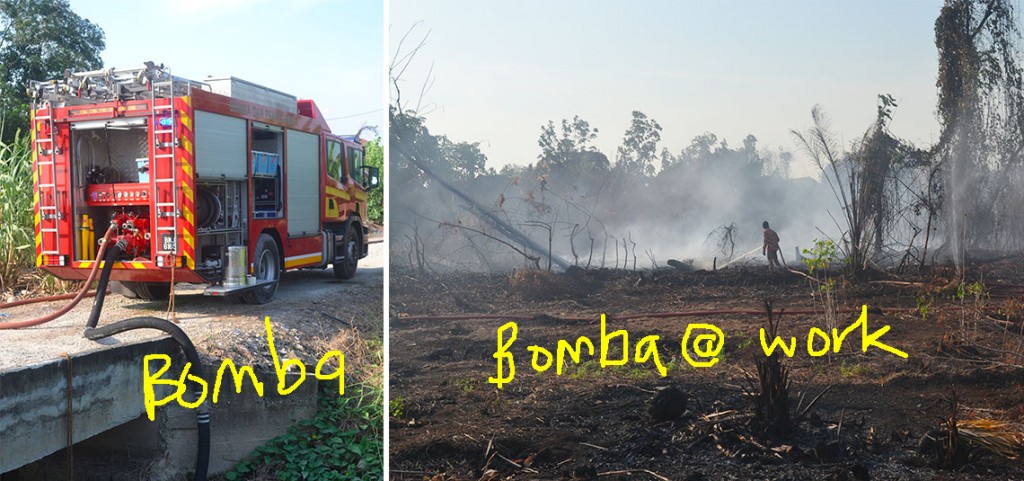

As we left, we also found a development coming up where the hotspot was according to NASA. (But then our Editor then got lazy really busy so he never wrote the story anyway.)
Despite the fact that they were taken during last year’s haze, looking at these pictures, you’ve gotta admit that to some certain extent, we’re responsible right? But…
… here’s how Malaysia compares to Indonesia
First off, let’s compare hotspots. (Hotspots are basically locations with possible active fires a.k.a. Where The Haze Probably Comes From.)
Here are the hotspots in Peninsula Malaysia on 3 days since 28th Aug. We couldn’t find satellite images tagged as East Malaysia tho. The numbers were also inconsistent – some days there were 0 hotspots, some days there were up to 10:

And what about… Indonesia:

Walau! Up to 1,347 hotspots, yau mou kau chor (got play wrong onot)?? Ok la, looking at these hotspots, our Klang photos and so-called-investigative-journalism efforts macam tak boleh pakai already.
(But we do have to point out that altho there were no East Malaysia tag, the visual data for Kalimantan oddly included Sabah & Sarawak.) Anyway, as you might know, Indonesia produces the most palm oil in the world with a massive size of palm oil plantations in Sumatra and Kalimantan. (More on this later.) It is believed that farmers there seem to practice slash-and-burn to cultivate better crop for the following season.
But some Malaysian companies have been linked
“About 50% of palm oil companies operating in Indonesia are owned by Malaysians and Singaporeans.” – Herry Purnomo, scientist at CIFOR (Center for International Forestry Research)
This link lists down 8 (of the many) companies currently being investigated for the current haze. According to Indonesian Environment Minister Balthasar Kambuaya, these 8 companies have Malaysian investors and fires were found on their concessions. He adds that if there is enough evidence, they would take them to court. And some of these 8 companies aren’t getting investigated for the first time – 2013 also kena before.

In 2013, The Straits Times reported that 3 local firms shared responsibility for the haze: Sime Darby Plantation (ugaiz know this), Kuala Lumpur Kepong (a.k.a. KLK, also one of the ex-owners of Crabtree & Evelyn) and PT Multi Gambut Industri (a subsidiary of Lembaga Tabung Haji). All 3 firms denied responsibility of the fires, adding that they had strict no-burning policies.
“Plantation owners have to set aside 20% of land to nurture smallholders in oil palm planting. It is a common practice for the smallholders to clear the land by fire.” – Mr Nor Hazlan Abdul Mutalib, executive secretary of the Association of Plantation Investors of Malaysia in Indonesia (APIMI) during the 2013 investigation
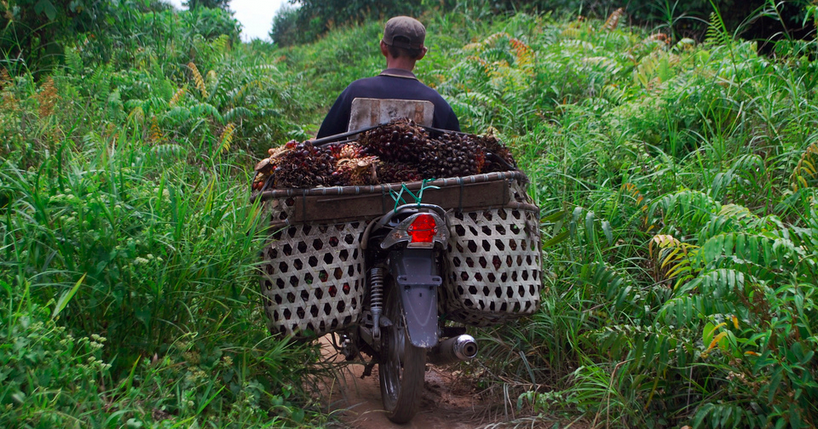
Hold up – what are smallholders? According to the Roundtable for Sustainable Palm Oil (RSPO), they’re defined as farmers growing oil palm, where the family do labour work, the farm being their main source of income, and where the planted area is below 50 hectares. (For a more comprehensive understanding click here.) But unfortunately, like what Nor Hazlan hinted above, these smallholders may be the ones lighting the flame.
“Small holders are the smaller guys in plantation and they supply the outputs to the big boys like say Sime Darby. Small holders unfortunately do not need to follow the regulations or rules of the bigger plantation and they are normally suspects of the fires.” – Pn Yasmin Rasyid, President of EcoKnights in an email interview with CILISOS
This may or may not answer a recent concern by Erik Meijaard, who wrote in The Jakarta Globe, that the big guys aren’t the ones we should be focusing on…. It’s the small- and mid-scale ones.
“So I say it again, just in case there is someone out there willing to listen. Studies of fire and haze in Kalimantan and Sumatra firmly point towards small-scale farmers and other under-the-radar, mid-scale land-owners, rather than large companies as the main cause of fires and haze.” – Mr Erik Meijaard, a Jakarta-based conservation scientist
But we have to add that some of these reports are contradictory, but from what we see, it looks like this entire haze problem is one muthaheffin’ son of a peat because it’s so complex… Which could explain why the situation just can’t be contain.
Why year after year also no change?
Yes, there are calls for Malaysian and Singaporean intervention. Yes, there is international pressure. Yes, there are discussions. LOTS of it. But the thing is…
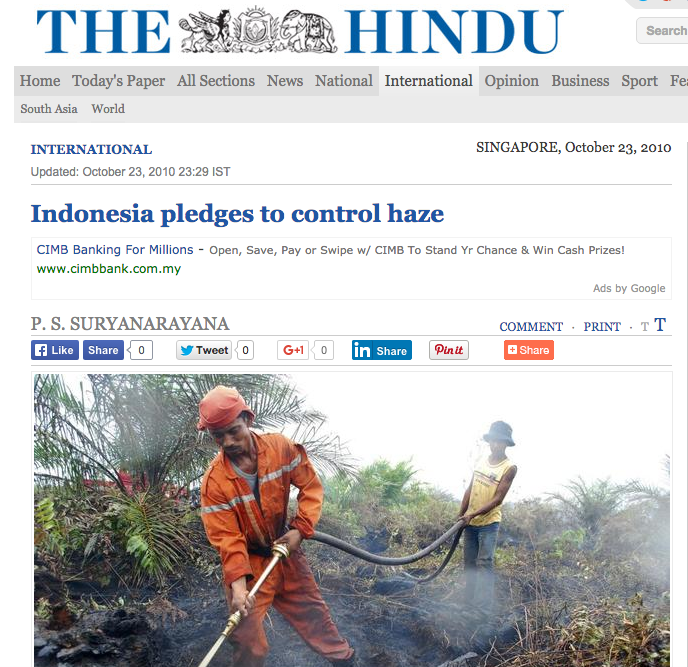
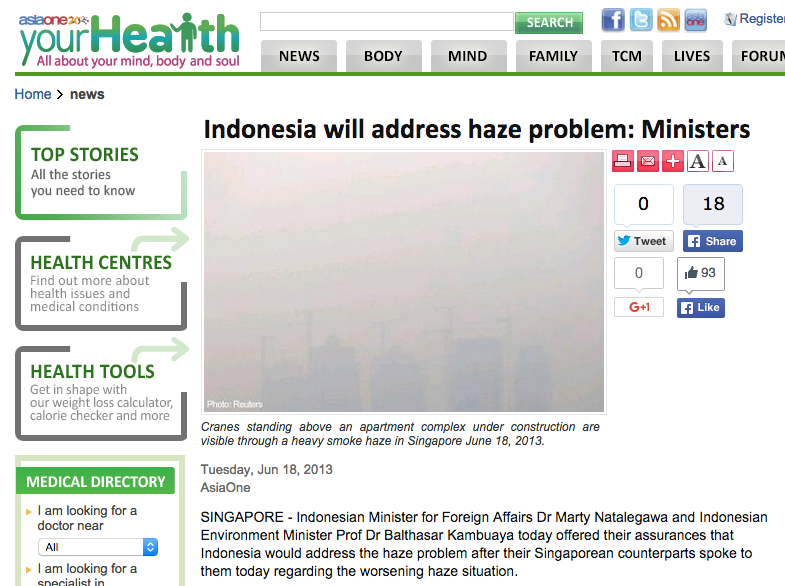
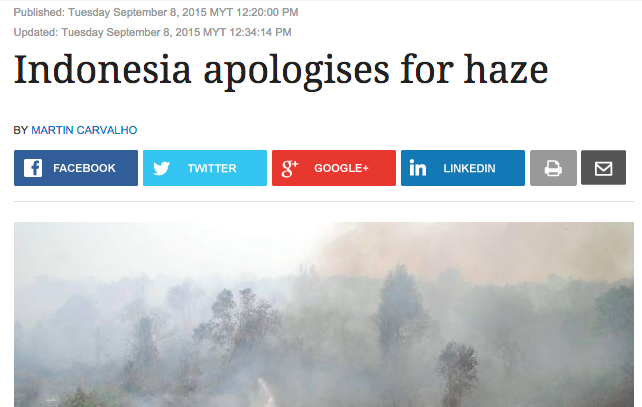
It just never stops! We probably remember the annual haze more often than we remember our own friends’ birthday! So why is it that even after that numerous meetings and rounds of apologies, Indonesia is still unable to control the haze?
Well, one reason could be because Indonesia has way more peatland compared to Malaysia. (Indonesia has 265,500 km2 of peatland, versus Malaysia which has 26,685km2 of peatland... only about 10% je.) Peatlands are basically areas where organic material (like leaves, twigs) accumulate naturally under water-logged conditions over years. Their fires are very difficult to put out as they don’t burn above the ground – they burn underneath and emit smoke, creating the haze that we’ve all grown to love.
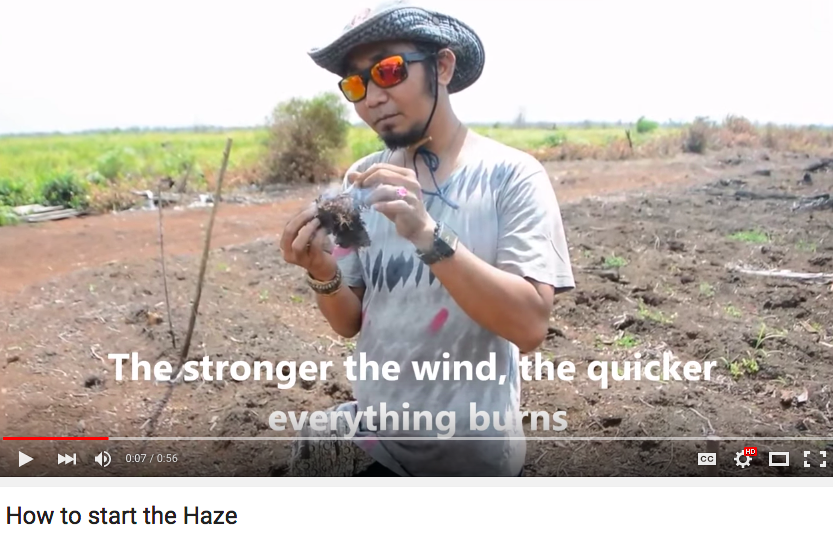
When they burn underground, they can also burn for MONTHS. The more people burn peatland, the drier it becomes. And the drier it becomes, the easier it is to catch fire… Which logically explains why we’re seeing a higher recurrence of haze over the past few years. It also takes a lot of water to extinguish.
One way to handle this problem is to restore water content to peatland. Naughty plantations create canals to drain out water and keep the soil dry, but by removing or blocking these canals, the water would get back onto the peatland to create the ideal, swampy effect. But… after so long…. why isn’t there any positive changes?
Maybe Indonesia doesn’t want to control the haze…?

Woah there, don’t get upset just yet. Let’s take a look at Indonesia’s palm oil business for a bit.
- Indonesia is the world’s biggest producer and consumer of palm oil, providing about half the world’s supply.
- It has grown significantly over the last 7 years – production has almost DOUBLED (2007: 16.8 million metric tonnes –> 2014: approx 33.5 million metric tonnes)
- Total area is approx. 8 million hectare and is twice more than it was in 2000. This number is expected to increase to 13 million hectare by 2o20. (For a shocking perspective, 8 million hectare of land = 111 x Singapores. YES, seratus sebelas biji Singapura!)
Palm oil is undoubtedly a key industry to the country’s economy. The export is an important foreign exchange earner, while the industry provides employment opportunities for MILLIONS of Indonesians. That’s a big deal, yo. So if Indonesia were to curb these slash-and-burn practices, essentially they’ll be looking at a roundhouse kick to their economy.
But let’s take a minute to look at Malaysia.
- Indonesia: 8 million* hectare @ approx. 33.5*** million tonnes
- Malaysia: 5.1 million** hectare @ approx. 20.3*** million tonnes
*Indonesian Ministry of Agriculture taken from Investment Indonesia | **Sime Darby Facts & Figures 2014 | ***United States Department of Agriculture taken from Investment Indonesia
We’re producing at slightly lower yield compared to Indonesia, and without making hazy headlines all across the region, we think we’re doing pretty ok in comparison 🙂 An environmentalist told us that it’s probably because we have the RSPO and palm oil management guidelines which many local plantations follow. Big time players such as Sime Darby also pride themselves in being sustainable and transparent. (Read their Sustainable Palm Oil Manifesto here.)

But back to Indonesia – the nation took 12 years to officially agree to the 2002 ASEAN Agreement on Transboundary Haze Pollution (AATHP). In September 2014, they finally gave in, becoming the last ASEAN nation to ratify the agreement. However, there’s currently another MoU between Malaysia and Indonesia aimed to tackle the haze problem. It hasn’t been signed yet, though – having being postponed for the second time, Wan Junaidi said that his Indonesian counterpart was engaged with putting out the fires.
Although the discussions all seem like a bunch of fluffy PR work by grinning older men in batik shirts, it begs the question – would they actually work since enforcement seems to be so weak?
Well… the future may not be so bleak actually
Well, not the immediate future la since we may see the return of the haze veeeery soon thanks to a cyclone in The Philippines… But in the long run, wearing a surgical mask out of the hospital may not be necessary after all.
As you know, Jokowi is Indonesia’s new president. Sworn in on 20th October 2014, he’s about to celebrate his first year anniversary in office. Most recently, he actually got down and dirty by visiting the burning site.
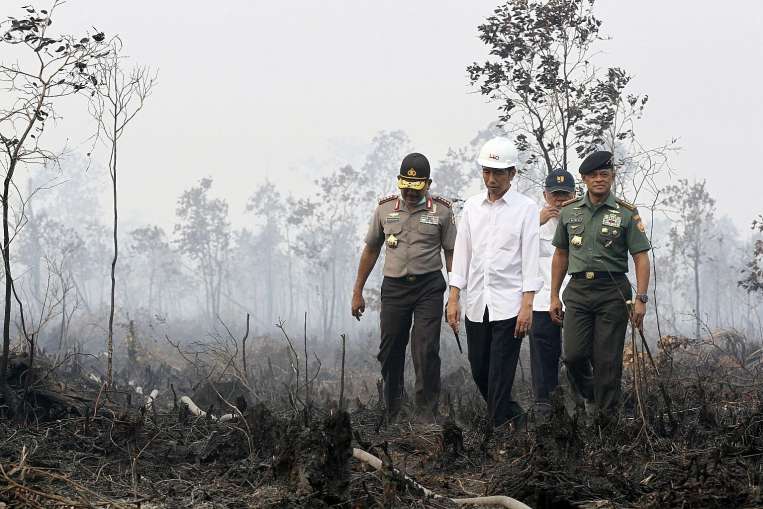
“Do not let the burning become difficult to handle. I have said that I no longer want to talk about the cause or the solution of the problem. Everyone knows what needs to be done.” – Jokowi, President of Indonesia
We don’t know for sure, but we couldn’t find news on any other Indonesian presidents visiting Ground Zero in the past. Jokowi, who has always been affectionately seen as the people’s choice, is a breath of fresh air to the country’s policies. Shaking things up, there are high hopes for Jokowi in tackling the haze pollution as he has backed up Singapore’s proposed stiffer fines for haze culprits… as long as Indonesia’s sovereignty isn’t challenged.
But apart from that, we Malaysians can do our part to control this haze problem.
The first one sounds simple, but may be really difficult to implement since palm oil has pretty much dominated our lives as we know it.
” The whole world is responsible for the haze. We buy and use so much palm oil based products from cakes to shampoo to body lotion and lipstick. If we all really hate palm oil and its impacts then seriosusly look at what you are buying.
When the buying stops, so will the need for palm oil plantation expansion, and so will the haze.” – Pn Yasmin Rasyid, President of EcoKnights to CILISOS
To learn more about how palm oil products affect the environment, click here.
Secondly, you can write to your MPs about local open burnings and illegal dumping if you spot any around your area. (Charles Santiago, Klang MP, seems particularly concerned and vocal about the haze in Malaysia.) And even if you don’t know how to do that, just read our previous article about writing to MPs and ADUNs here.

But ultimately, big corporations can also make the conscious choice to stop doing businesses with/in Indonesia. Even you as a concerned citizen can write to your MP to pressure these companies to make this choice.
As mentioned, big plantation firms have denied responsibility over the fires, indicating that plantation-based smallholders are to be blamed. But if these very esteemed corporations pride themselves in being sustainable and eco-conscious, shouldn’t this promise be extended to every part of the world, regardless of where their company does businesses? How far is a company willing to go to prove their values?
The haze issue is not just a matter of blurry skylines and jokes about 50 shades of grey. Clinics are getting crowded with respiratory cases. 3 children have died. There is a 70% increase in death rate in the elderly.
This should not be price we have to pay for the sake of development and money.
- 851Shares
- Facebook841
- Twitter1
- Email2
- WhatsApp2

